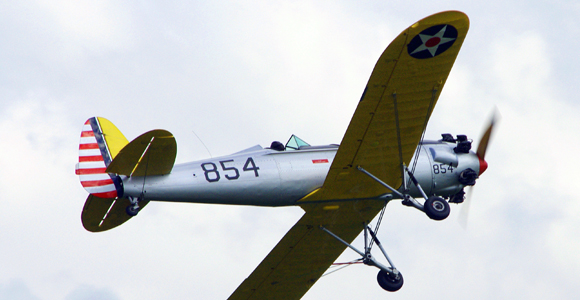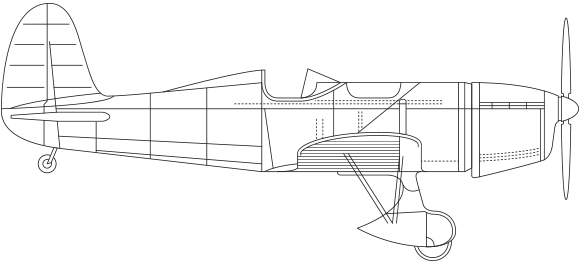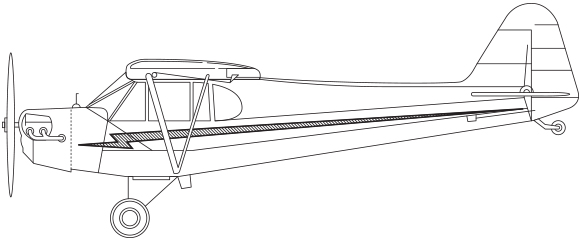Science and technology

Need a ride—in a plane?
Then you should talk to Margaret Viola.
Benjamin Recchie, AB’03
Margaret Viola, AB’10, apologizes; she just does not like the sky right now. We had hoped to go flying, a quick hop in a two-seater plane at Wittman Regional Airport in Oshkosh, Wisconsin. The winds aren’t bad, she admits, but the clouds are too low to fly comfortably. Instead, Viola, manager of air tours for the Experimental Aircraft Association (EAA), leads an impromptu tour of the classic and newer aircraft housed in the EAA’s hangars.
Oshkosh—Viola’s hometown—is known for three things: fire engines, children’s clothing, and the EAA, an international organization of aviation enthusiasts, many of whom restore or build their own airplanes. The organization gets its name from the Federal Aviation Administration regulation that permits homebuilt airplanes to fly only if they’re clearly marked with the (all-caps) word EXPERIMENTAL. The EAA’s annual AirVenture Oshkosh air show, held at the end of July, briefly turns the sleepy Wittman Regional into the world’s busiest airport—busier than O’Hare and Midway combined—as thousands of planes descend upon it.
Viola’s childhood home was under the flight path for planes approaching the airport, and although her parents weren’t aviators, “I was drawn to the noise of the jets that would come in every summer,” she recalls. “It does a number on you as a kid.” Her first airplane ride was at the age of eight in EAA’s 1929 Travel Air E-4000 open-cockpit biplane. In middle school she volunteered at the EAA’s museum and headquarters. In high school and college she interned there over the summers.
“Even though I was really steeped in all of this, it never clicked in my head that I could make a career in aviation,” she says. She came to UChicago wanting to study physics, to better understand “the way the world ticks,” founding the Women in Physics RSO along the way. Approaching graduation, though, she was unsure what to do next. That’s when fate intervened, in the form of Caroline Ackley, AM’10, whose locker at Ratner was next to Viola’s.
Ackley had a job lined up at a university in Somaliland, a breakaway section of Somalia that was effectively independent but not recognized by the United Nations or the United States. (The State Department has warned Americans to avoid travel to all parts of Somalia, including Somaliland, since at least 2004.) There was a school starting there, called Abaarso Tech, that needed a math and science teacher, and Ackley thought Viola would be perfect. “She bugged and bugged me to apply every day. Finally I did just to appease her,” Viola says. “Hours later, I heard back. Two days later I had this job offer.” In a few months Viola found herself preparing to teach in the Horn of Africa.
Abaarso Tech, a boarding school, had been founded the previous year to give a Western-style education to most promising students in Somaliland, regardless of their ability to pay. Viola, who taught biology and math, received room and board and a small stipend. The usual difficulties of being a first-year teacher combined with the cultural learning curve made the job a real challenge: “You’re figuring out how to navigate the lack of this type of food or that type of resource, or maybe this thing shuts down for a period of weeks because of Ramadan.”
It was while teaching that she returned to flying. Abaarso Tech’s profile was high within Somaliland. Viola met the country’s minister of aviation and the executives from its national airline. She asked if she could shadow them in their work. Soon it became apparent that in the little pond of Somaliland, her aviation knowledge made her an unexpectedly big fish. Within months she became an unofficial adviser to the ministry. She helped the government decide how to allocate a $10 million investment in airport infrastructure from Kuwait and choose which plane a regional airline should purchase next. (She also introduced the concept of passenger lines at ticket and passport counters, rather than free-for-all crushes.)
After her year of teaching, Viola planned to work in the aviation industry in Dubai, but she wanted to earn her pilot’s license first. Being young and female in Africa had not, she says, been a major detriment to her advisory work, but the Middle East was different; a license would boost her credibility. She returned to Oshkosh, intending to stay long enough to complete her training, but upon her return had second thoughts. “I was just a little too young to be navigating” life in Dubai and relying on the unrecognized Somaliland government to pay her adequately, she says with a tinge of regret. In the end, she moved back home, got a job at EAA, and earned her private pilot’s license. Within a year she was promoted to manager of the organization’s air tours.
Viola now oversees a small fleet of vintage aircraft. There’s a World War II veteran Boeing B-17 Flying Fortress bomber, a pair of even older Ford Trimotor airliners, and a few smaller planes that fly out of the EAA’s headquarters. The B-17 and Trimotors tour the country selling rides during warmer months, part fundraising operation for EAA and its local chapters, part living-history exhibit. “The B-17 strategic bombardment campaign is what saved us in Europe and kept World War II relatively short,” she says. “That you can get in and fly and experience how it worked is a big deal.”
It’s a race against time, though; the parts to keep the B-17 and Trimotors flying are almost impossible to find now, and Viola thinks they’ll likely have to ground the bomber permanently within a decade. In the meantime, she’s trying to figure out how to keep them airworthy a little longer. Working with the antique planes is more than a little fun for her; while recounting her path, she strokes one of the Trimotor’s propellers the way one might pet a favorite cat.
“I have my dream job right now,” she says, before apologizing again; the weather hasn’t improved, and we won’t be flying today. Tomorrow, though, there will be blue skies and a plane waiting, fueled and ready.
These are a few of my favorite planes
Every lover of aviation has a favorite plane, whether for its flying characteristics, place in history, or sheer aesthetic qualities. Margaret Viola is no exception, although with the incredible variety of aircraft she gets to be around, both in the EAA AirVenture Museum and those passing through for the annual AirVenture Oshkosh air show, it seemed unfair to make her pick just one. Here are her top three.

Ryan Sta
“The quintessential Art Deco airplane. I hope to fly one someday.”

Piper J-3 Cub
“I’ll always have a special place for this airplane, as many pilots do, because it was the plane I learned to fly in. It is such a sweet, simple little airplane, made for flying over countrysides low and slow.”

Northrop T-38 Talon
“Built as a trainer jet in the late ’60s, I think it still looks like the most modern jet in the fleet because it is so sleek and sharp. I just love hearing them tear through the sky overhead during flybys. There’s nothing better.”
